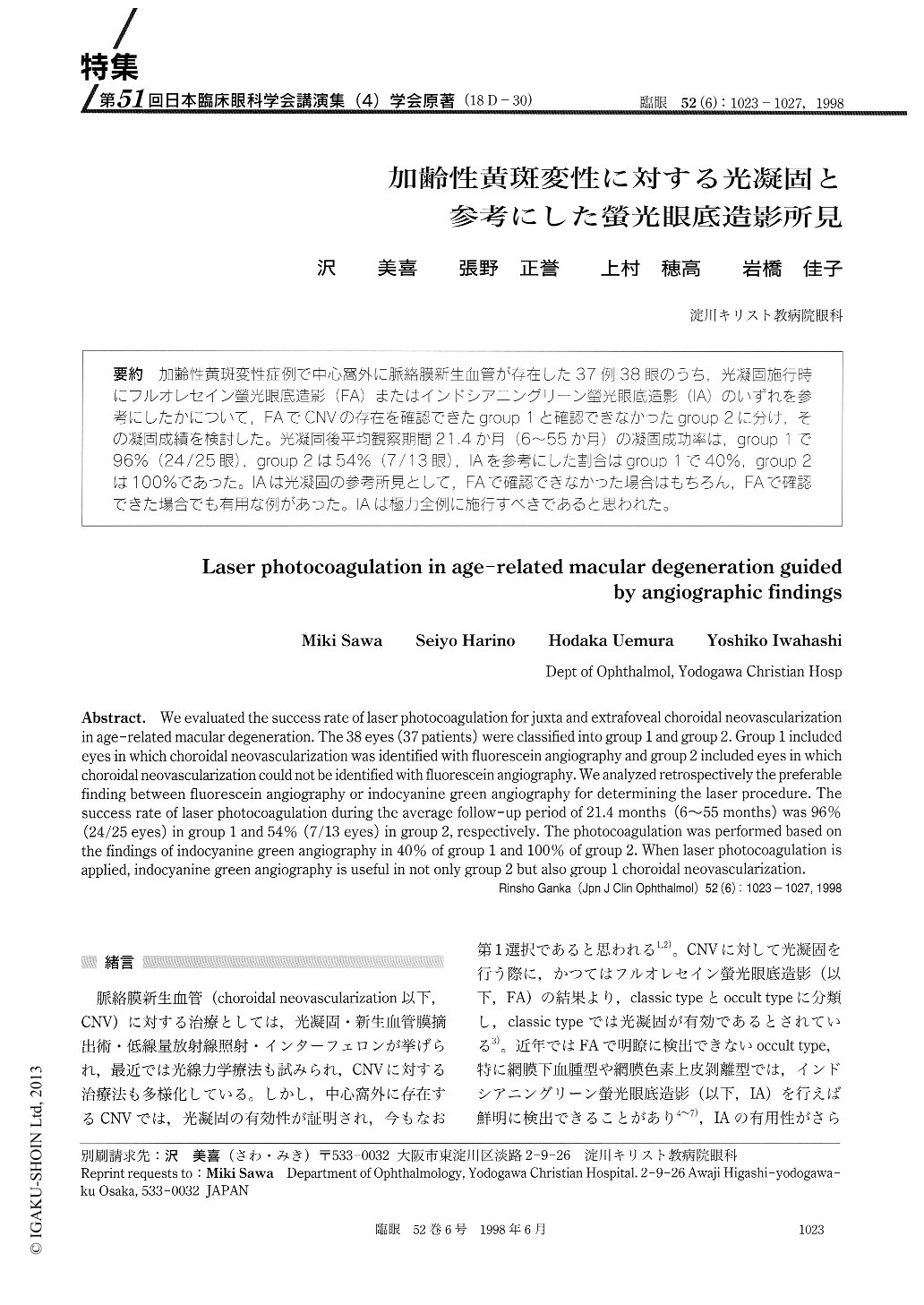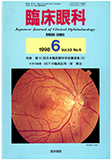Japanese
English
- 有料閲覧
- Abstract 文献概要
- 1ページ目 Look Inside
(18D-30) 加齢性黄斑変性症例で中心窩外に脈絡膜新生血管が存在した37例38眼のうち,光凝固施行時にフルオレセイン螢光眼底造影(FA)またはインドシアニングリーン螢光眼底造影(IA)のいずれを参考にしたかについて,FAでCNVの存在を確認できたgroup 1と確認できなかったgroup 2に分け,その凝固成績を検討した。光凝固後平均観察期間21.4か月(6〜55か月)の凝固成功率は,group 1で96%(24/25眼),group 2は54%(7/13眼),IAを参考にした割合はgroup 1で40%,group 2は100%であった。IAは光凝固の参考所見として,FAで確認できなかった場合はもちろん,FAで確認できた場合でも有用な例があった。IAは極力全例に施行すべきであると思われた。
We evaluated the success rate of laser photocoagulation for juxta and extrafoveal choroidal neovascularization in age-related macular degeneration. The 38 eyes (37 patients) were classified into group 1 and group 2. Group 1 included eyes in which choroidal neovascularization was identified with fluorescein angiography and group 2 included eyes in which choroidal neovascularization could not be identified with fluorescein angiography. We analyzed retrospectively the preferable finding between fluorescein angiography or indocyanine green angiography for determining the laser procedure. The success rate of laser photocoagulation during the average follow-up period of 21.4 months (6~55 months) was 96% (24/25 eyes) in group 1 and 54% (7/13 eyes) in group 2, respectively. The photocoagulation was performed based on the findings of indocyanine green angiography in 40% of group 1 and 100% of group 2. When laser photocoagulation is applied, indocyanine green angiography is useful in not only group 2 but also group 1 choroidal neovascularization.

Copyright © 1998, Igaku-Shoin Ltd. All rights reserved.


